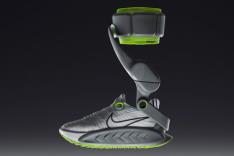
To improve as a runner, regardless of your ability and experience, you need to run consistently over long periods of time. But logging miles regularly—some at quicker paces to prepare for races—can result in overuse injuries.
Outsmart injury with this six-step process:
- Learn your body
- Develop efficient patterns of movement
- Improve joint mobility
- Strength train
- Identify training errors
- Increase your body awareness
Learn Your Body
When runners and triathletes visit Erik Taylor, a National Academy of Sports Medicine certified trainer in Redondo Beach, California, the first thing he does is analyze their strengths and weaknesses. It sounds simple, but it requires a trained eye."There are deviations in biomechanics and these will lead to injuries," Taylor says.
If you've suffered from the same recurring injury, or experience soreness, tightness or aches in the same places frequently, visit a trained specialist, sports medicine doctor or physical therapist for a biomechanical analysis.
"Evaluating and addressing possible misalignment, motion or stability issues can optimize a runner's ability to cope with the repetitive pounding and occasional overreaching associated with running," says Ken Nicodemus, exercise physiologist and director of The Fit Stop Human Performance Lab in Carlsbad, California.
One way to help with stability issues is to choose your running shoes carefully, Nicodemus advises. Ensure the type and fit is appropriate for your mechanics and terrain, and replace worn shoes every 400 to 500 miles. If you experiment with a new brand or type—minimalist shoes, for example—give yourself time to adjust. Start with a 20-minute easy run in the new shoes and increase time in them gradually if you don't experience discomfort or blisters.
MORE: How to Improve Your Running Form
Develop Efficient Patterns of Movement
After Taylor, a former member of the Nike Farm Team (a post-collegiate running program whose goal was to develop Olympians and national champions), exposes a client's weaknesses, he helps him or her build structural integrity, or the foundation of a strong, injury-free body."Building the base of biomechanics helps you move efficiently without deviations," says Taylor. "For example, when you perform a functional exercise [such as a plank], everything should be in alignment; the midline of your core should be strong enough to hold your spine without deviation."
Performing exercises with good form teaches the body how to move more effectively. If you can execute a simple lunge or plank properly, imagine how much easier running when you're tired will feel.
MORE: How to Improve Your Stride Without Trying
Improve Joint Mobility
Taylor recommends foam rolling or deep-tissue sports massage, and stretching and yoga to encourage joint mobility.
"The foam roller helps break up scar tissue and loosen the tendons so the muscles are at the proper length," says Taylor. "If you're healthy, roll out the areas that are tight—in runners that's typically the Achilles, psoas, quads, piriformis—four to five times a week. If you have a history of injuries, roll out for 10 to 15 minutes every day."
Taylor warns that there's a point of diminishing return with foam rolling. Avoid putting so much pressure on the area that it hurts worse when you're done.
- 1
- of
- 2
Get ACTIVE on the Go


Couch to 5K®
The best way to get new runners off the couch and across the finish line of their first 5K.
Available for iOS | Android







Discuss This Article